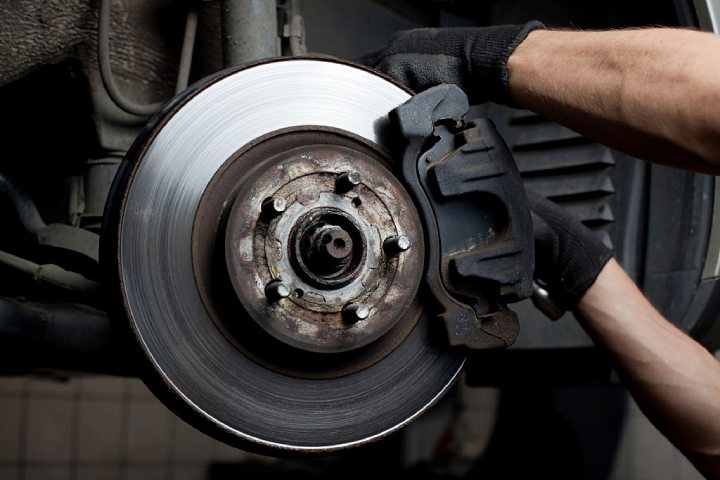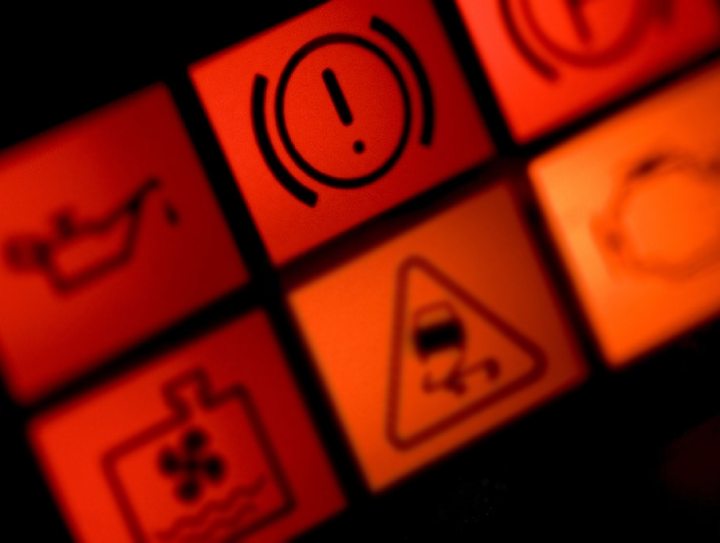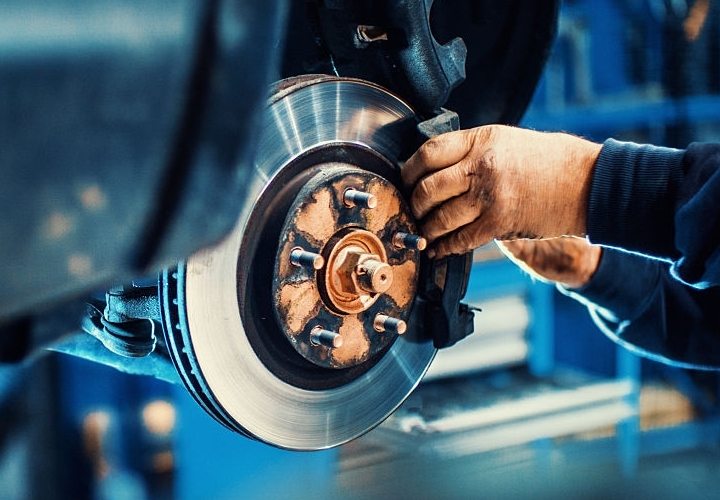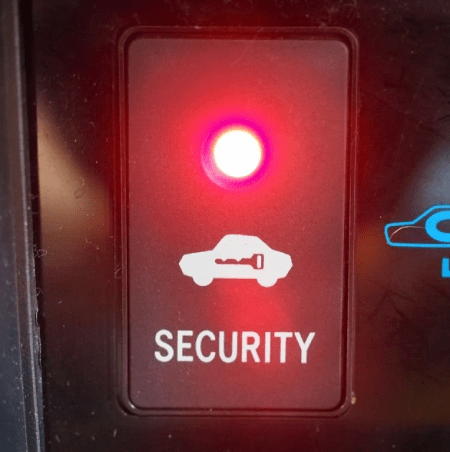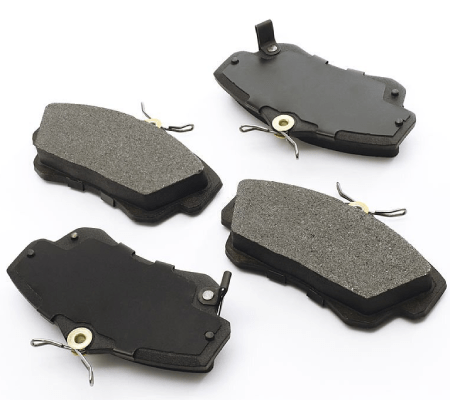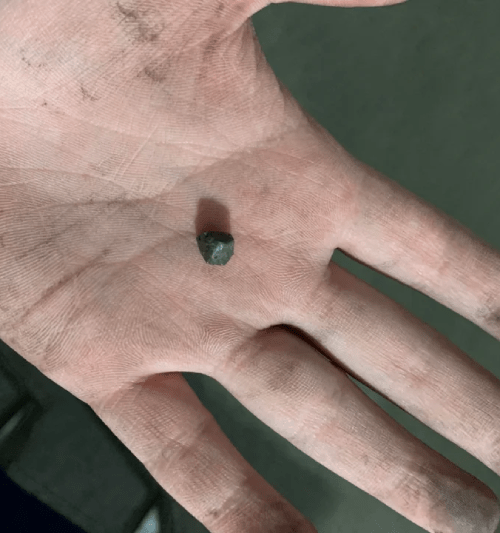The ABS module is the control unit in your car that controls the ABS. The brake pedal sensor sends a signal to the device when you press the brakes, and it signals how much pressure you’re applying to the pedal.
The modulator then tells the servomotor which resistance level to apply via electrical signals sent to the brakes. It does this at a 5 Hz or 10 Hz rate, depending on the vehicle.
- How does the ABS modulator work?
- Can I drive my car if the ABS module is bad?
- How does an ABS work?
- What are some common ABS issues?
- What should I do if my ABS light comes on?
- Do you have to reprogram an ABS module and how much does it cost?
- What causes an ABS module to go bad?
- How long should an ABS module last?
- How to make sure your new system is working properly
- Where is the ABS module located?
- Can a bad ABS module cause spongy brakes?
The modulator is located in your car’s engine bay, where it’s exposed to extreme heat and cold so that it can fail due to material failure or if there are electrical problems with your ABS.
If any one of these components has issues, you may hear grinding when you press the brake pedal because the wheels aren’t responding correctly, which could indicate that your ABS Modulator needs replacement.
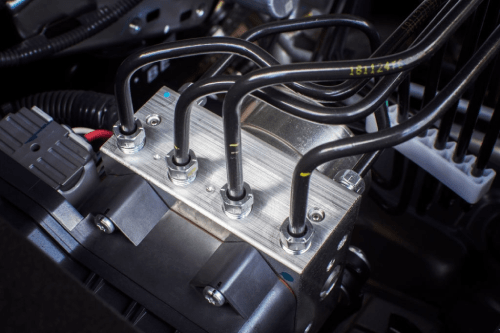
So for your ABS to work correctly, it depends on this part working flawlessly.
How does the ABS modulator work?
An ABS modulator for an automobile is designed to monitor how quickly the wheels are revolving on the car.
This way, if they start spinning too fast or slow down, the system will know about it and react appropriately. It will either slow down the vehicle directly by sending power to different brakes, releasing brake pressure on individual wheels, or not allowing more power to be sent to those wheels to keep them from slipping.
If all else fails, then traction control kicks in, which acts as a counter-measure to stop the wheels from spinning. ABS modulators work with other electronic stability control systems components to help prevent skidding.
ABS is an acronym for the Antilock Brake System introduced in automobiles in 1978.
There are many different types of ABS designs, but most fall into one of two categories: four-channel or three-channel ABS. Four-channel ABS sensors measure the speed at all four wheels, while three-channel ABS only measures the speed at the front two wheels.
This article will discuss 3-channel ABS 4-channel is more often found on trucks.
The ABS module is the brain of an ABS, which works using wheel speed sensors that are usually mounted to each wheel or brake rotor.
The main job of ABS is to reduce braking distance by keeping the tires from locking up during hard braking. If your car’s ABS light comes on, it means there’s a problem with the ABS.
This could be due to a failed wheel sensor that would require the entire sensor’s replacement. The hydraulic control unit (HCU) controls modulating pressure and sends signals back to each wheel cylinder through connections in the vehicle’s wiring harness.
These locations are difficult to access and repair, but replacing one or two broken wires will solve most problems; however, replacing a faulty HCU is not a DIY job.
As long as the ABS light stays on, it means your car is still driving with an ABS malfunction, which can be very dangerous. The only real fix for this problem is diagnosing and repairing it by a professional.
Can I drive my car if the ABS module is bad?
A common question I get from my customers is: “Can I drive my car if the ABS module is bad?”.
Like with other mechanical issues regarding cars, this isn’t a yes or no answer.
It depends on what the issue is and how severe it is. If you run into an ABS light that comes on while driving, you shouldn’t just immediately assume your ABS module needs to be replaced. Instead, you should drive your car to a repair garage and have a car mechanic inspect it.
There may be other problems, such as incorrect tire pressures, affecting how your ABS operates.
Let’s start with what we know; the antilock brakes system (ABS) exists to help drivers maintain steering control during emergencies and panic stops by preventing skidding caused by locked-up wheels.
The three key components of the system are:
• Antilock brake computer module tells the anti-lock brake control valve when to cycle.
• Anti-lock brake control valve automatically releases pressure from the brakes as needed using hydraulic force.
• Anti-lock brake pump provides a greater fluid volume as needed during the braking event.
How does an ABS work?
When you hit your brakes hard enough to lock up a wheel(s), the ABS kicks in and sends a signal via electrical pulses to your anti-lock brake computer module (ABS module). The ABS module then cycles the anti-lock brake control valve rapidly open and closed quickly.
This rapid cycling creates hydraulic pressure that forces two things to happen.
First, hydraulic pressure is released from the brakes on the non-locked up wheels allowing you to continue steering.
Second, hydraulic fluid is fed into the brake lines on the locked-up wheel(s) to release the brake locks and allow the wheels to rotate freely again so you can drive.
What are some common ABS issues?
The most common issues with an ABS are bad sensors which will cause your ABS light to come on.
This will trigger a stored trouble code that might look something like this “P0A80”. The good news is that only one sensor needs to be out of range for the ABS module, not to know what is going on with each wheel.
If you have two malfunctioning sensors, it could cause a more severe issue.
Another common problem is a failing control valve that won’t allow the hydraulic system to release or apply pressure as needed. This can cause a wide array of symptoms, from no ABS light on to it flashing fast, which indicates a low fluid level.
In some cases, this may also be caused by a worn-out brake pump that allows the pressure in the pump to drop as you slow down and speed up.
If your ABS module sees low fluid levels over time, it will pull a stored trouble code, and your ABS light could come on along with other problems such as excessive tire wear due to not being able to stop properly.
What should I do if my ABS light comes on?
The first thing you should always do when you see your ABS light come on is to pull over and check all of your tire pressures.
If they are correct, check the brake fluid level with the engine running and ensure it’s not low.
Next, check the sensor connectors to make sure they’re clean and tight – this could fix most issues with sensors that aren’t working.
Finally, if everything is good there, you might need to replace either a sensor or control valve (it could be both), depending on how bad it is.
Do you have to reprogram an ABS module and how much does it cost?
After installing a new ABS module, you need to have it reprogrammed by a specialist for it to work.
How much it would cost you will depend on who is doing your ABS programming or what shop is doing to replace your ABS controller.
Suppose we take an average fee of $120 per hour for a mechanic’s time multiplied by his hourly rate and add all expenses related to buying, installing, and programming a new ABS module. In that case, the total could be anywhere from $400 – $700.
If your ABS controller is reprogrammed and the light remains on, and the brake pedal has an unusual feel, we recommend having your vehicle checked for additional problems.
What causes an ABS module to go bad?
The short answer is water.
Due to roads that are not well maintained or roads with lots of potholes, large amounts of water can enter the ABS and eventually find its way down below the control unit, where it can do some damage.
Another result of poorly maintained roads is vibrations. In time, specific car components can start to fail due to vibrations.
How long should an ABS module last?
While most car manufacturers expect the ABS module to last the car’s life, sometimes this part may break sooner. As discussed already, the leading cause for this is water and dirt getting into the system.
How to make sure your new system is working properly
ABS module dealers will usually offer some warranty. This is often for between one and five years. LiSomeBS modules have a lifetime warranty like the original manufacturer’s parts.
In addition, you should ask how long the dealer has been selling ABS modules because this can give you an idea of how trustworthy they are. You’ll also want to see an invoice from the dealer that says they’ve inspected the ABS module before shipping it out.
Lastly, make sure the company offers a return policy because if something goes wrong with your new ABS, there may be no other options available to fix it.
Where is the ABS module located?
Most manufacturers fit the ABS module in the engine bay. However, some older models might have it on the vehicle’s frame. Sometimes it can be covered by a plastic cover to protect it from water and dirt.
Please refer to your car’s service manual if you have trouble locating yours. Below is a diagram showing the location of the module on most vehicles.
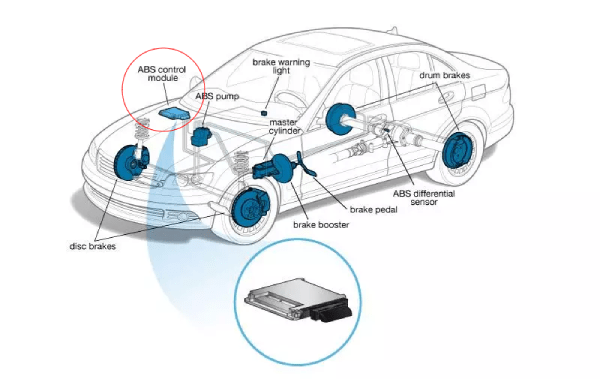
Can a bad ABS module cause spongy brakes?
A failing ABS module can cause your brakes to feel spongy. This applies to any failing part of your car’s ABS. An unresponsive brake pedal is another symptom of a malfunctioning ABS module. Diagnosing a malfunctioning ABS module is not as simple, as the symptoms can be the same for every failing part of the ABS.
My name is Jeffrey Williams and I have been a car mechanic for over 35 years. I am currently working NYC Auto Repair Shop, in New York City and recently developed a strong passion about blogging. I decided to put together this blog where I will try and answer the most commonly asked questions I get on a daily basis from my customers.

